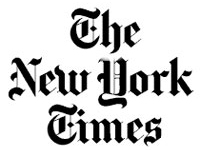
New York Times
A Joyous Image Maker Way Before His Time
By Suzy Menkes
PARIS — The neck of Grace Jones is stretched up, up and away, her head rising high to a sliced-off crown. That weird vision might not seem a dramatic transformation in the digital age. But this image of the performing artist was made in 1982, way before Photoshop and when Jean-Paul Goude, its creator, was working with paint, sticky tape and cardboard to get the effect that now comes at the click of a mouse.
Mr. Goude, an artistic multitasker as designer, illustrator, photographer and ad man, baptized each transformed graphic as a “French Correction” (a play on the movie title “The French Connection”). But that witty tag only just begins to describe the genius of a man who envisaged the effects of the wired world 25 years before video cameras and computer games became part of everyday life.
The crazy, colorful and dynamic world of Mr. Goude, 71, is captured so vividly at the Musée des Arts Décoratifs in Paris that phalanxes of visitors wait in line to re-live the experience of the train that ran down the Champs-Élysées at France’s bicentennial celebrations in 1989. The line-up of carriages dominates the exhibition hall, recalling an era when President François Mitterrand and his culture minister, Jack Lang, encouraged the artist to reflect the sociological changes of the time.
In the museum’s “Goudemalion: The Jean-Paul Goude Retrospective,” until March 18, the artist captures three significant factors.
The reference to “Pygmalion” is to transformations that include mechanical body changes — like the Grace Jones neck extended with metallic haulage — and collages dating to the late 1960s. That was when the young designer went to New York, was embraced by Esquire Magazine and was snapped by Andy Warhol in one of the artist’s Polaroid prints. Mr. Goude followed the Warhol path as a zesty jester in the world of art and commerce.
The 1980s were also focused on the multi-ethnic society, expressed in the African body of Ms. Jones, then Mr. Goude’s partner, and in the strong North African physique of the model Farida Khelfa. A 1985 vision of a tiny Azzedine Alaïa leaping toward the elongated figure of Farida has become a legendary fashion image.
Then there was androgyny, also an essential spirit of the 1980s. That male/female thing was seen in the transformation of the model Laetitia Casta, dressed in a tuxedo, her lustrous hair slicked back and with masculine eyebrows. Mr. Goude used that image as part of a long and fruitful advertising collaboration with the department store Galeries Lafayette.
The importance of inventive advertising is shown on the small-screen modules that pepper the exhibition. They include such famous images as the slamming windows in a Chanel “Ègoïste” perfume ad from 1990 and Vanessa Paradis as the spirit of Coco.
The multimedia screens are effective throughout, running on the ground down the sides of the train and showing the activities and diverse groupings that actually took place during the parade. Those screen images contrast — or complement — the drawings of the event that line the walls.
The power of the image is evident at the exhibition’s entrance, where a figure in crinoline rotates like a moveable cage. Central also to the show is a live model, speaking aloud in Russian, as she sits in front of a mirror showing off her Chanel pearls.
Although the exhibits are self-explanatory and lively in their diversity, the catalog, published by Editions de La Martinière, adds extra dimensions, including a commentary by Jean Paul Gaultier, who shares not just the same J.P.G. initials with Mr. Goude, but also a vision.
“Between Jean-Paul Goude and myself, everything — or almost all — was about women, the ‘alternative’ models who did not respond to the traditional cannons of beauty,” the designer says in the catalog, describing their joint vision as an “incarnation of the 1980s.”
“Unorthodox” is the word that best describes Mr. Goude’s vivid images, as seen in gentle sketches of sexualized women, geometric drawings that look like visions created in cyber-space, and story boards that might be a detailed preparation for stage or street events. The use of video screens gives depth to each display and brings the show to life.
So, though it is billed as a retrospective, the exhibition does not feel like a summing up of a powerful career. It shows rather that the intense and joyous imagination of this artist — illustrator, cinéaste and advertising guru — makes him not so much a symbol of the past as a model for the future.